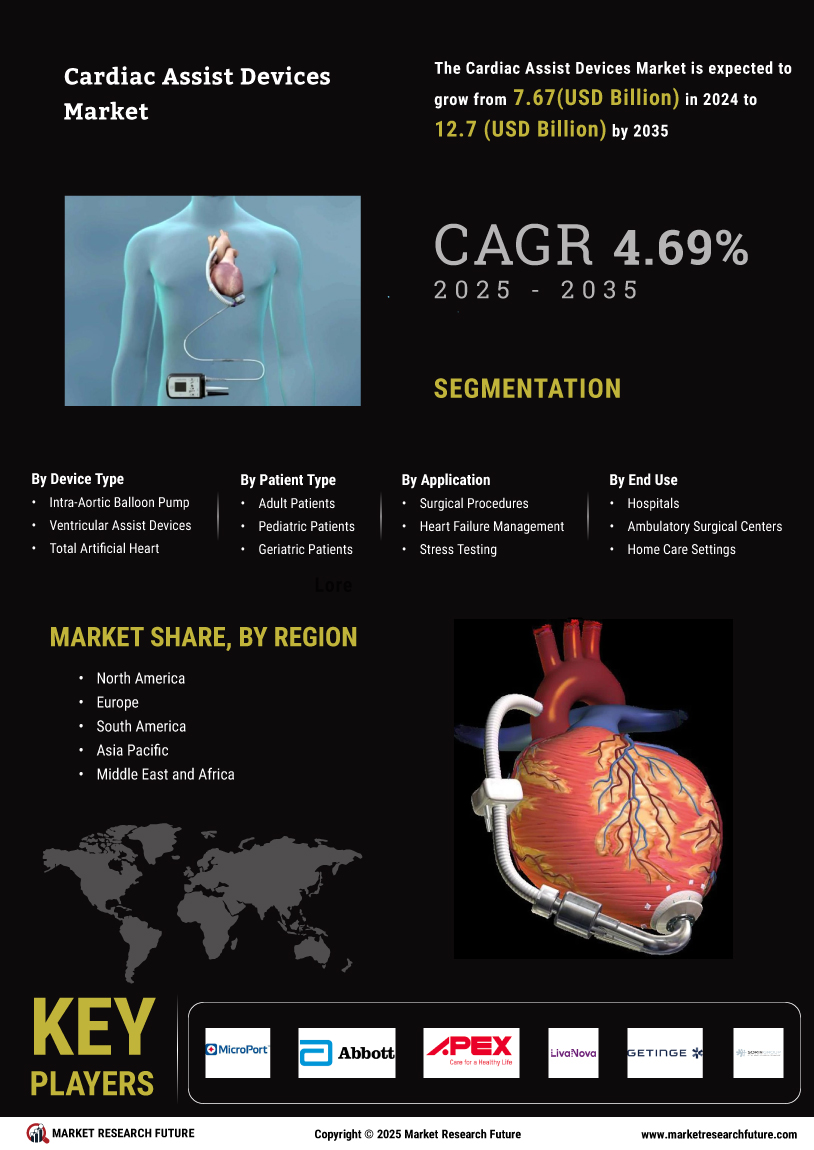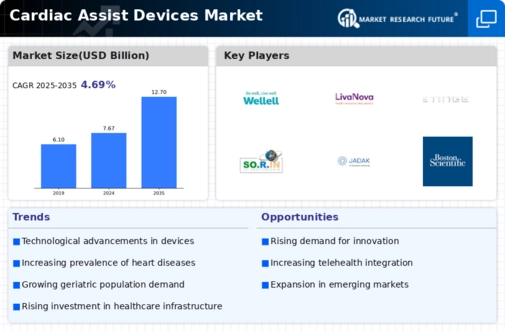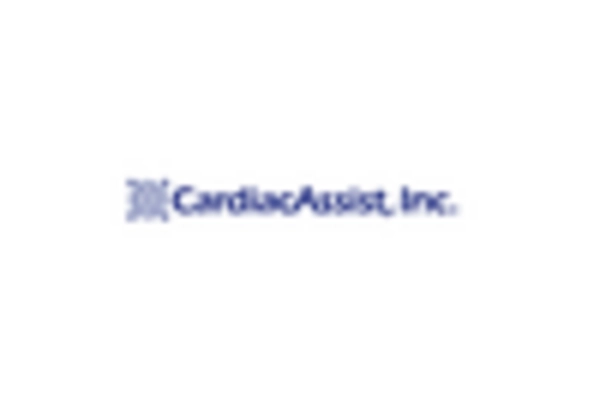Rising Prevalence of Cardiovascular Diseases
The increasing incidence of cardiovascular diseases is a primary driver for the Cardiac Assist Devices Market. As populations age and lifestyle-related health issues become more prevalent, the demand for effective cardiac support solutions rises. According to recent data, cardiovascular diseases account for a substantial portion of global mortality rates, necessitating advanced treatment options. This trend is likely to propel the market forward, as healthcare providers seek innovative devices to manage heart failure and other related conditions. The growing awareness of heart health and the importance of early intervention further contribute to the market's expansion. Consequently, the Cardiac Assist Devices Market is positioned to experience significant growth as healthcare systems adapt to meet the increasing needs of patients suffering from cardiovascular ailments.
Technological Innovations in Cardiac Devices
Technological advancements play a crucial role in shaping the Cardiac Assist Devices Market. Innovations such as miniaturization, improved battery life, and enhanced biocompatibility are transforming the landscape of cardiac support devices. For instance, the development of next-generation ventricular assist devices (VADs) has led to better patient outcomes and reduced complications. The integration of smart technology, including remote monitoring capabilities, allows for real-time data collection and management, which is increasingly appealing to both patients and healthcare providers. As these technologies evolve, they are expected to drive market growth by offering more effective and user-friendly solutions for heart failure management. The Cardiac Assist Devices Market is thus likely to benefit from ongoing research and development efforts aimed at enhancing device performance and patient experience.
Aging Population and Increased Life Expectancy
The aging population and increased life expectancy are pivotal factors driving the Cardiac Assist Devices Market. As individuals live longer, the incidence of age-related cardiovascular conditions rises, necessitating advanced medical interventions. The demographic shift towards an older population is particularly pronounced in many regions, leading to a higher prevalence of heart failure and other cardiovascular diseases. This trend creates a substantial market opportunity for cardiac assist devices, as healthcare providers seek to address the unique needs of elderly patients. Moreover, the focus on improving quality of life for aging individuals further emphasizes the importance of effective cardiac support solutions. Consequently, the Cardiac Assist Devices Market is poised for growth as it adapts to the evolving healthcare landscape shaped by demographic changes.
Growing Awareness and Education on Heart Health
The increasing awareness and education surrounding heart health significantly influence the Cardiac Assist Devices Market. Public health campaigns and educational initiatives are effectively informing individuals about the risks associated with cardiovascular diseases and the importance of early detection and treatment. This heightened awareness is likely to lead to an increase in patient consultations and, consequently, a greater demand for cardiac assist devices. Healthcare professionals are also becoming more proactive in recommending these devices as part of comprehensive treatment plans for patients with heart conditions. As awareness continues to grow, the Cardiac Assist Devices Market is expected to expand, driven by a more informed patient population seeking effective solutions for heart health.
Increasing Investment in Healthcare Infrastructure
Investment in healthcare infrastructure is a significant driver for the Cardiac Assist Devices Market. Governments and private entities are allocating substantial resources to enhance healthcare facilities, particularly in regions with high cardiovascular disease prevalence. This investment often includes the procurement of advanced medical devices, including cardiac assist devices, to improve patient care. As healthcare systems expand and modernize, the demand for innovative cardiac solutions is expected to rise. Furthermore, the establishment of specialized cardiac care centers is likely to facilitate the adoption of these devices, thereby contributing to market growth. The Cardiac Assist Devices Market stands to gain from this trend as healthcare providers seek to implement cutting-edge technologies to enhance treatment outcomes.


















Leave a Comment